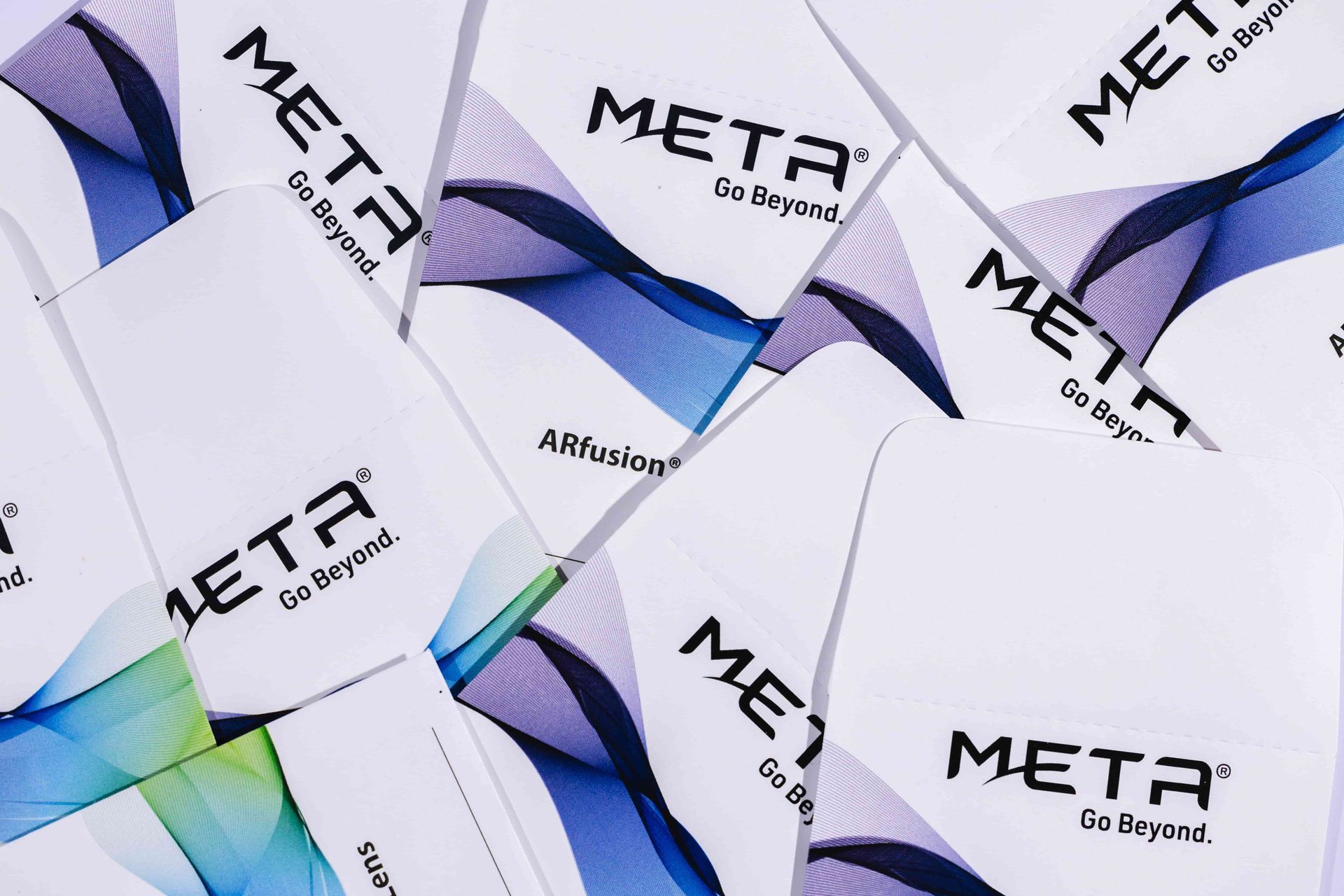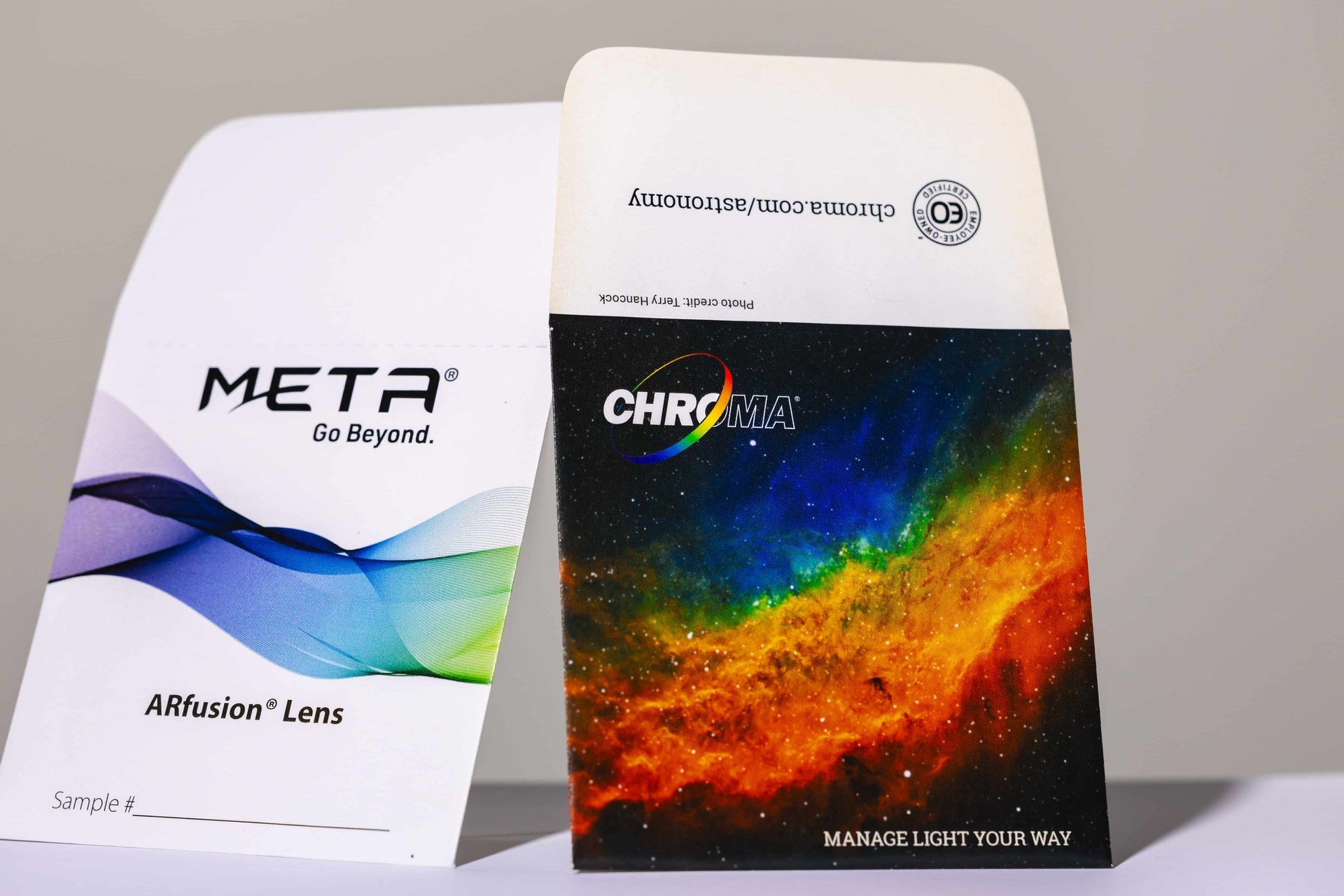Custom Printed Finished Single Vision (FSV) Envelope (Non-Expandable)
Description:
Our custom-printed ophthalmic lens envelopes protect lenses and reinforce your brand and your messaging.These non-expandable envelopes, made from 80# premium-grade white matte paper, are available in two sizes: 82 mm by 92 mm and 90 mm by 90mm, and are lined with non-woven fabrics. They are even manufactured with accuracy for compatibility with automated robotic packaging systems!

Shipping and Turnaround Times: If the item is in stock, then it ships the same day or the next day. If it is a standard custom order item, then you can expect it to be shipped about 10 days after proof approval. If it is a special custom order, then shipping will take 3-4 weeks.

Materials Used: 80# premium-grade white matte paper
Sizing and Dimensions
Product Sizing Specifications
Closed
Open
Unfolded
Frequently Asked Questions
Commonly Asked Questions & Helpful Responses
-
What sizes do your Custom Printed Finished Single Vision (FSV) Envelopes (Non-Expandable) come in?
These particular envelopes are available in two sizes: 82 mm by 92 mm and 90 mm by 90mm.
-
What are these envelopes made of?
Our Custom Printed Finished Single Vision (FSV) Envelopes (Non-Expandable) are made of 80# premium-grade white matte paper.
-
What are Custom Printed Finished Single Vision (FSV) Envelopes (Non-Expandable) best used for?
These envelopes are best used to protect lenses and reinforce your brand and your messaging. To learn more about them and if they can fit your needs, contact us today!
-
How should I send my custom envelope artwork?
Attached is a general guide for layouts. It is HIGHLY advisable to print, cut, and fold layouts to check for proper bleeds, spacing away from folds and die line edges, and to insure no art is being covered by areas that fold over each other.
Also, the attached .ai Template has TWO layers: Layer 1 is the die line. This should ALWAYS remain the exact color it is, remain ‘locked’, and kept isolated from the ‘Art’ layer. The second layer is for the graphics to be printed, and should contain ONLY the graphics to be printed. Any extraneous objects or duplicate objects should be removed from the file.
Here’s some suggestions that will have them print far better, easier, sharper, and dry quicker:
1) All black text and background should be on the Key[K]/Black separation ONLY.
2) All logos would reproduce better in vector format; if not available, should be 400ppi/dpi
3) All images should be 400ppi/dpi.
4) All text should be vector.
5 All colored text should be just that… text ‘filled’ with the appropriate color, NOT a text mask with a colored block behind it[as Photoshop files tend to do].
6) All front/back/bottom/side bleeds should be a minimum of 1/16th of an inch.*
7) All text and images should be a minimum of 1/16th of an inch away from folds and die cutting areas.*
8) Full coverage bleeds beyond the die cut should be a minimum of ¼ of an inch.
9) All spot color[PMS Colors] must be converted to process color[CMYK].
10) Files should be submitted in .pdf format.
*1/16th inch is the MINIMUM. We encouraged using 1/8th - 3/16th inch for internal bleed areas[over folds], as well as spacing elements away from folds and cutting areas.
What Happens After I Send My Message?
Our team will review your information.
A staff member will contact you as soon as possible.
We will work with you to order your products.
Request A Quote
For more information or to schedule a service, call us at (860) 963-1231 or complete the form.
Contact Us
We will get back to you as soon as possible.
Please try again later.
Our Contact Information
Request a Quote From Creative Envelope!
Business Hours
- Mon - Fri
- -
- Sat - Sun
- Closed








